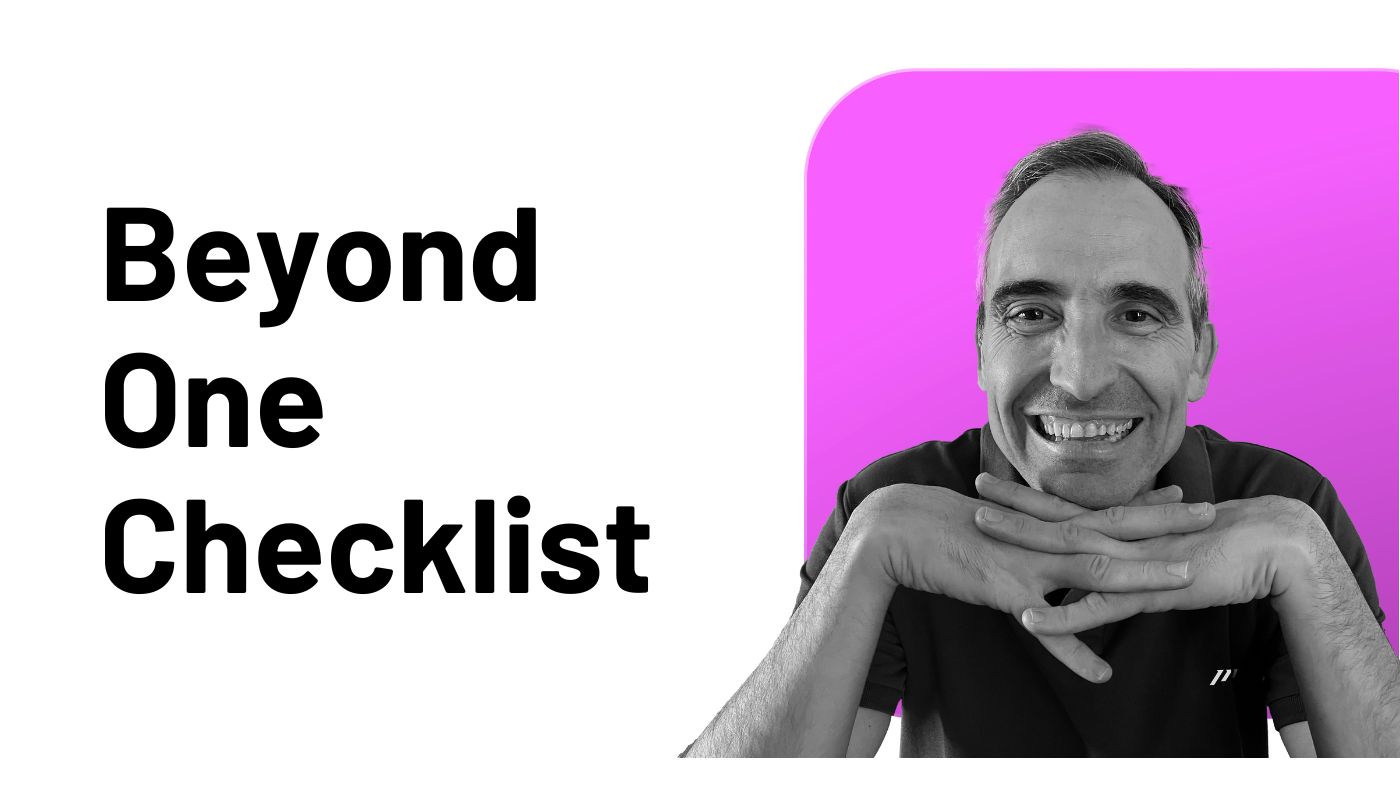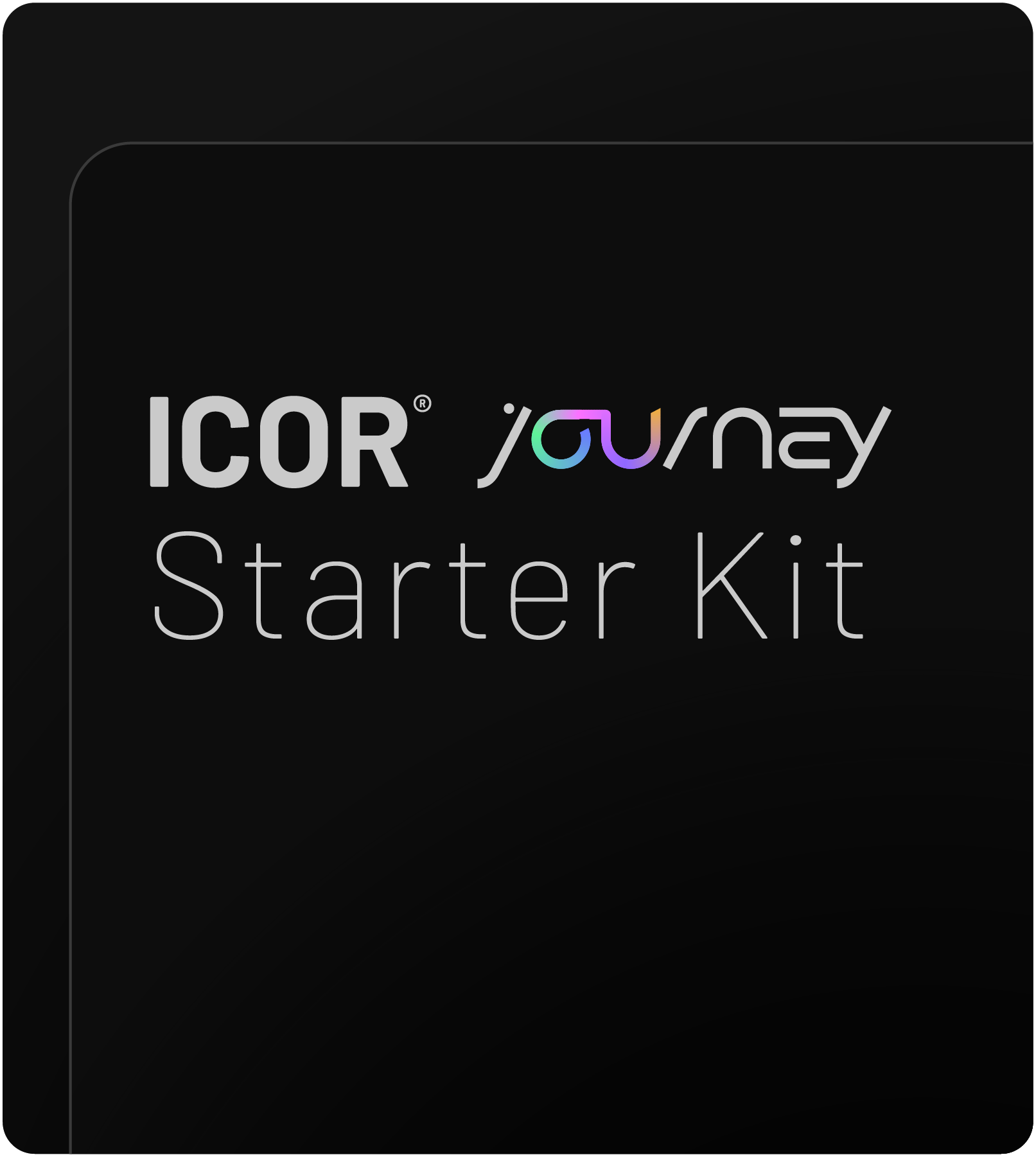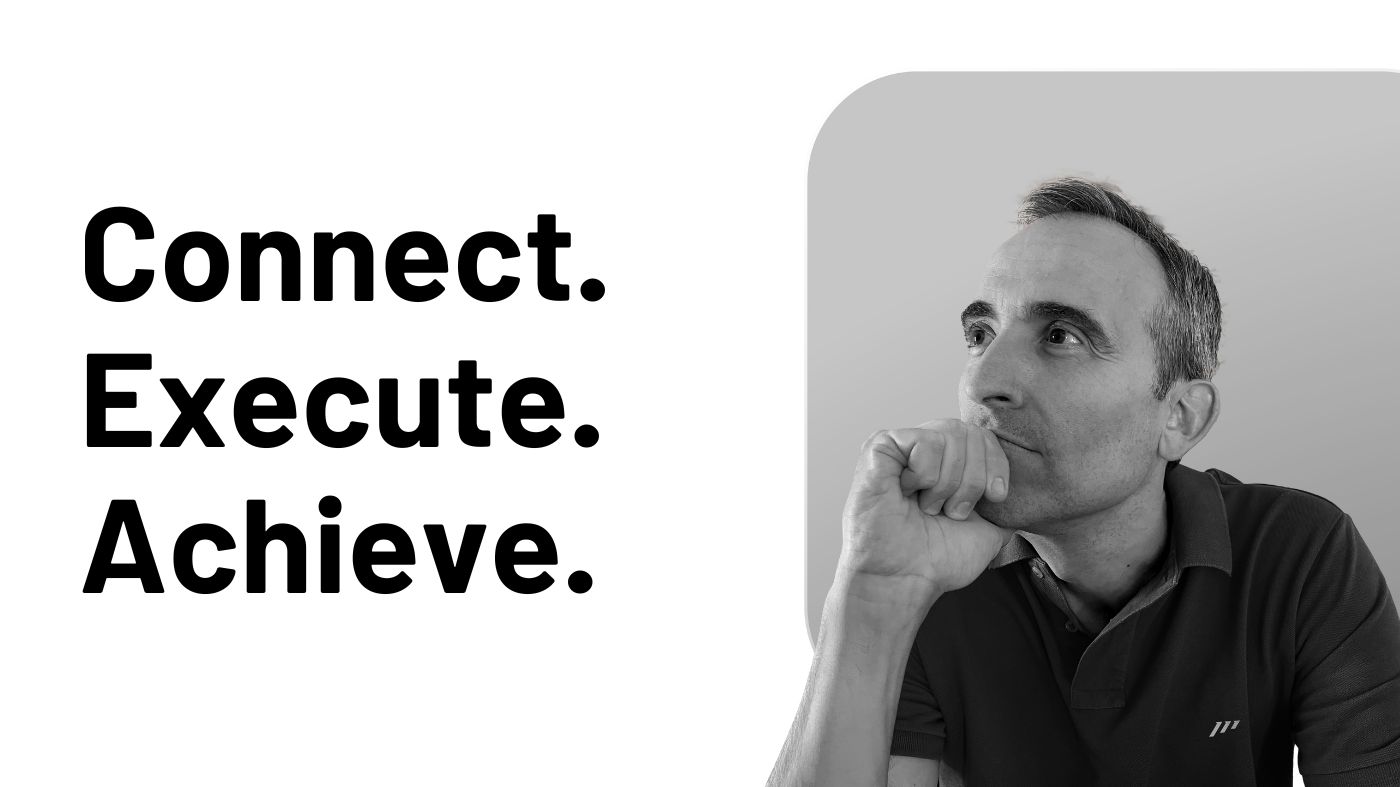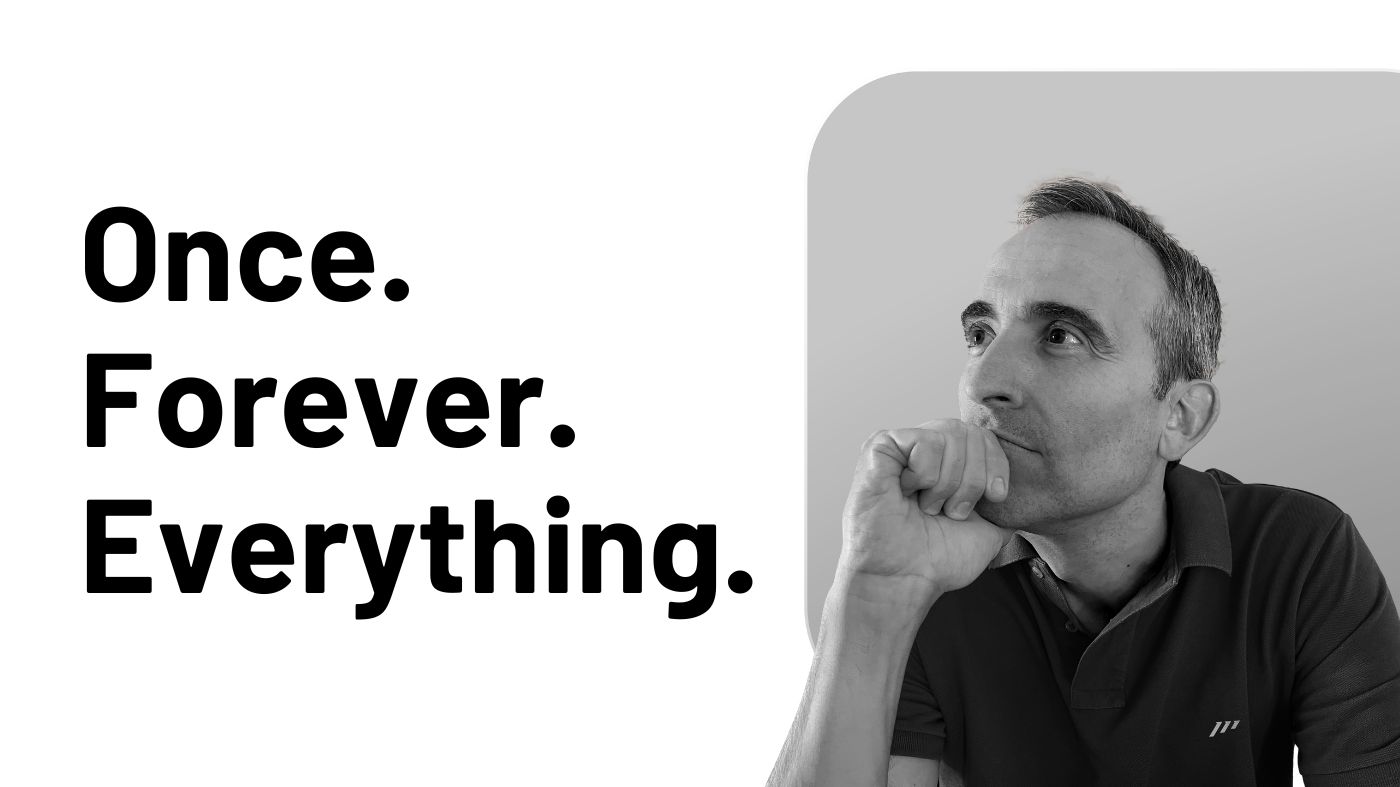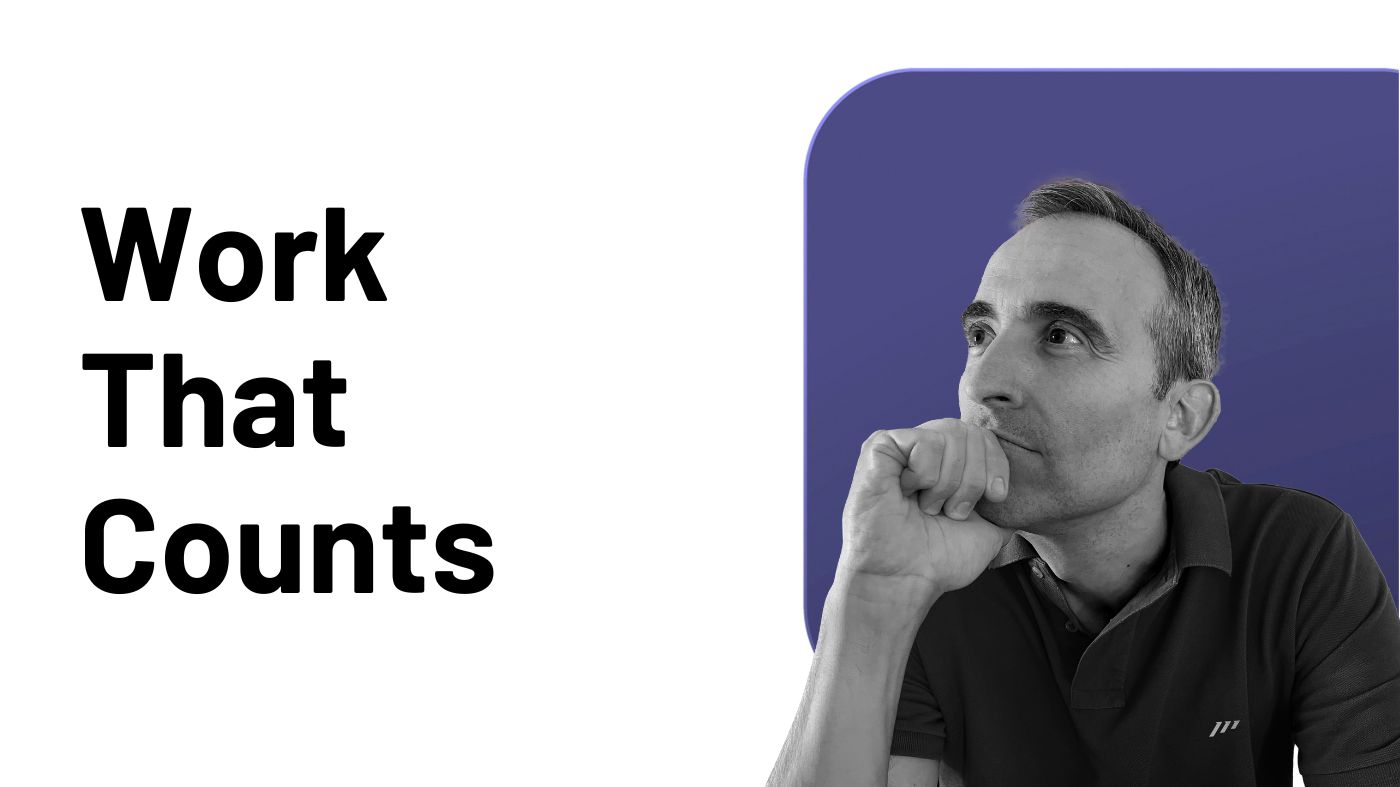We all want the same thing.
That perfect to-do list we can run through sequentially, on autopilot, every single day.
A magical system where someone (or something) simply tells us: “Do this now. Then do this. And do this later.”
No decision fatigue. No prioritization paralysis. Just a clear, sequential checklist that guides us from morning to night, ensuring we’re always doing exactly what we should be doing.
But if you’re reading this, you’ve probably discovered what I learned after decades in productivity: that perfect, single checklist doesn’t exist.
Not because we haven’t found the right tool yet. Not because we lack discipline. But because our lives as busy professionals are fundamentally more complex than any single list could possibly manage.
We deal with multiple variables simultaneously, in real-time, and in environments that are aggressive, stressful, and fast. Really fast.
We juggle time constraints, task importance, energy levels, and urgent matters all while trying to stay aligned with our long-term goals.
This is too much for our physical brains to handle alone. We need a system; a digital one working behind the scenes.
And that’s where most productivity advice falls short. It promises simplicity when what we need is a sophisticated productivity system that feels simple to use.
In this article, I’ll show you why the one-checklist approach fails, and reveal how you can build a productivity system that delivers what you’ve always wanted: the ability to move through your day with confidence, knowing you’re always working on the right thing at the right time.
The solution isn’t finding the perfect tool.
It’s building the perfect productivity system for your specific needs.
A Brain with Two Parts: Why Your Mind Needs a Digital Partner
The point is we’re not able with our physical brain to handle it all.
Our brains evolved to track a handful of priorities in relatively stable environments.
They weren’t designed for the constant barrage of inputs, decisions, and competing priorities that define modern professional life.
Think about what happens when you try to juggle too many tasks mentally:
-
You forget important details.
-
You miss deadlines you meant to meet.
-
You feel constant, nagging anxiety about what you might be forgetting.
-
Your focus fractures as your mind keeps cycling through your mental to-do list.
-
You waste energy constantly reprioritizing instead of executing.
This happens not because you lack intelligence or discipline, but because your brain has fundamental biological limitations.
The cognitive load of managing dozens or hundreds of tasks with different priorities, deadlines, dependencies, and contexts simply exceeds what even the most brilliant mind can handle unaided.
What makes this challenge even more profound is that we are fundamentally sequential creatures. Our brains are designed to focus on one thing at a time, to move through tasks in sequence rather than in parallel.
This sequential nature is why we so deeply desire that perfect, sequential checklist. It’s not just a productivity preference: it’s hardwired into our cognitive architecture. When we try to multitask or juggle multiple priorities simultaneously, we’re working against our brain’s natural design.
“The more complex the world becomes, the more creative we must be to meet its challenges.” — Tom Kelley
Unlike popular “Second Brain” approaches that treat your digital productivity system as a mere extension or supplement to your thinking, at the Paperless Movement® we’ve developed ICOR® based on a fundamentally different premise: one brain with two parts of equal importance.
ICOR® is the methodology we designed to help busy professionals build a productivity system end to end, one that moves you from information to action. It recognizes that your digital system isn’t subordinate to your physical brain but an equal partner in a unified whole.
When these two parts work together correctly, sharing the same concepts and workflows, you experience remarkable clarity. Neither is an extension of the other: they’re complementary halves of the same system, operating with the same logic and principles.
This partnership only works when both parts operate with identical concepts and workflows:
-
When they do, friction disappears and everything runs on autopilot.
-
When they don’t, you constantly battle between what your mind expects and what your digital system delivers.
The ideal productivity system embraces our sequential nature, allowing us to focus on one task at a time, complete it, and move confidently to the next.
It doesn’t force us into the multitasking trap that modern work environments often demand.
The One Checklist Dream vs. Reality: Why a Single List Falls Short
That’s why, as it’s a one-and-only checklist, most people think they can bet on just one tool, as that checklist should live in just one place.
The logic seems sound: if I want one sequential list to follow, I need one tool to manage it.
This is why so many of us spend years jumping from tool to tool, looking for that perfect solution that will finally organize our chaotic professional lives.
But here’s the uncomfortable truth: a single checklist is impossible, not because we haven’t found the right tool yet, but because our work lives are fundamentally too complex for any linear sequence to capture.
Let me explain why:
-
First, we deal with wildly different types of tasks. Some are deep, focused work requiring hours of concentration. Others are quick responses needing just minutes. Some are scheduled meetings with fixed times. Others are flexible tasks that can be moved around. Some require collaboration, others solitude.
-
Second, our priorities constantly shift. What was urgent this morning might be superseded by a critical request from a client this afternoon. The energy you had for creative work might fade by midday, making administrative tasks more suitable.
-
Third, our tasks come from everywhere. They emerge from emails, chat messages, meetings, phone calls, colleagues stopping by your desk, and your own creative thinking. Each source has its own context that gets lost when everything is flattened into a single list.
-
Fourth, we operate in multiple roles. You might be a manager, a creator, a strategist, and a team member (often in the same day). Each role demands different types of attention and work.
“Multitasking is a lie.” — Gary Keller
When you try to manage all of this complexity with a single checklist, you create what productivity experts call “friction”: the resistance between what your productivity system delivers and what your brain actually needs in the moment.
This friction manifests as:
-
Constant reordering of your list.
-
Ignoring your productivity system when it doesn’t match reality.
-
Feeling guilty when you deviate from your plan.
-
Spending more time managing your productivity system than actually working.
The result?
You either abandon your productivity system entirely, or you spend precious mental energy fighting it rather than focusing on your work.
So if the one-checklist approach is fundamentally flawed, what’s the alternative?
It starts with accepting a counterintuitive truth: to achieve the simplicity of a sequential checklist, you need a productivity system that embraces complexity, not one that denies it.
Multiple Checklists: The Practical Solution to Task Management Complexity
You have to admit it: your life is complex.
That’s why you cannot face that situation from such a simplistic approach.
That doesn’t mean you cannot end up with the perfect setup.
Yes, I can tell you you can do it.
The thing is it has to be intuitive for you. Nobody needs to explain it to you. You understand it because it’s literally how you think and see life.
So, you need to start splitting things to make them simpler. You cannot eat a whole beast in just one bite.
When I use the term “checklist” throughout this article, I’m using it as a simplification of something much more complex. It’s a pedagogical approach to make abstract concepts more relatable, though we’re actually discussing sophisticated productivity mechanisms.
What ICOR® proposes instead is a multiple “checklist” approach, where each checklist is purpose-built for a specific type of work or context.
Here’s what this looks like in practice:
-
Email-based tasks stay in your email tool. Modern email clients like Superhuman have built-in task management features. When a task comes from an email, let it live there, where all the context remains intact.
-
Communication tasks stay in your communication tool. When a colleague assigns you something in Slack , use the platform’s built-in features to track it right there.
-
Project tasks stay in your project management tool. Tasks that are part of larger initiatives belong in tools like ClickUp or Asana where they maintain their connection to the bigger picture.
-
Personal tasks stay in your personal task manager. For work that isn’t tied to other systems, a focused tool like Todoist or Things provides the perfect environment.
-
Time-sensitive events belong in your calendar. Meetings, appointments, and other fixed-time commitments deserve special treatment in calendar tools designed specifically for this purpose.
This approach creates multiple specialized checklists instead of one unwieldy master list. Each checklist exists where the work naturally happens, preserving valuable context and reducing friction.
But I know what you’re thinking:
-
“Won’t multiple checklists create chaos?”
-
“How do I keep track of everything?”
This is where the magic happens.
You need a productivity system behind these checklists to guarantee you can move through all of them systematically, no matter where they are.
Think of it like having an index in a reference book. The index doesn’t contain all the information itself. Instead, it tells you exactly where to find what you need, when you need it.
In your productivity world, a planner serves as this “index.”
A planner is a tool specifically designed to manage time, which is ultimately what we’re aiming to optimize. It doesn’t replace your specialized checklists. Instead, it pulls from them selectively, creating a daily and weekly plan that tells you what to focus on next.
This approach gives you the best of both worlds:
-
The rich context of specialized environments where tasks live naturally.
-
The sequential simplicity of a clear path to follow each day.
When implemented correctly, this multiple checklist approach feels like having that single, perfect checklist you’ve always wanted.
The difference is that behind the scenes, your productivity system is doing the heavy lifting of managing complexity while presenting you with just what you need to know right now.
The System Behind the Checklists: Making Your Productivity Engine Run Smoothly
This is where ICOR® methodology truly shines.
A collection of disconnected checklists without an overarching productivity system is just organized chaos.
What transforms these separate lists into a cohesive productivity machine is the productivity system that coordinates them.
The productivity system I’m describing isn’t just another tool. It’s a framework of concepts and workflows that governs how your tools interact and how you interact with them.
Here are the essential components that make this work.
First, you need absolute clarity on what belongs where.
Each task type needs a clear home (a Single Source of Truth), and that decision must be consistent. Email tasks stay in your email tool, project tasks in your project management tool, and so on. This consistency builds trust in your productivity system.
Second, you need defined routines to process each checklist. These aren’t just good habits; they’re the operational backbone of your productivity system. For example:
-
A morning routine for checking email and communication tools.
-
A midday routine for project management review.
-
An end-of-day routine for planning tomorrow.
These routines ensure you touch each checklist at the right frequency, preventing anything from falling through the cracks.
“Routine, in an intelligent man, is a sign of ambition.” — W.H. Auden
Third, you need a centralized planning mechanism. This is where your planner comes in. A proper planning tool doesn’t just track tasks; it orchestrates your entire productivity system. It creates a daily and weekly sequence that pulls selectively from all your checklists, presenting them in the order that makes sense for your energy, time constraints, and priorities.
The planner serves as your “pointer” or index, telling you exactly where to focus your attention in a specific moment. It guarantees that by going through it sequentially, you’ll address everything important across all your checklists.
Fourth, you need a clear processing workflow for new inputs. When something new enters your world, you should know immediately:
-
Is this information or action?
-
Where does it belong?
-
When will I address it?
This instant triage prevents accumulation and ensures everything enters the right checklist immediately.
What makes this productivity system work is that it mirrors how your brain naturally operates. You’re not forcing yourself to work against your instincts. Instead, you’re creating an external structure that complements your natural thinking patterns.
The beauty of this approach is its flexibility.
The productivity system can adapt to different tools, different work styles, and different life circumstances. The tools may change, but the productivity system, the concepts and workflows remains consistent.
This is why the “brain with two parts” concept is so powerful.
Your physical brain and your digital system operate with the same principles, creating a seamless experience. When you look at your planner, you know exactly what to do next. When you complete a task, you know exactly what comes after. Everything flows naturally, one step after another.
Is this more complex than a simple to-do list? Initially, yes. But here’s the crucial truth: there’s simply no possibility of managing the complex reality that busy professionals face with a “simple to-do list.” It’s like trying to navigate an ocean with a map of your backyard.
This is why so many busy professionals end up overwhelmed and frustrated. They’re constantly searching for something that doesn’t exist: that magical simple solution that handles overwhelming complexity.
They follow productivity gurus who claim they can manage everything in just one tool with a minimal setup.
Don’t believe them.
If their “simple system” works flawlessly, they’re not dealing with the same complex professional reality you face every day.
Their “productivity system” works precisely because they operate in a simplified environment where you wouldn’t even need a sophisticated and real productivity system in the first place.
But once established, it operates with remarkable simplicity. The complexity is handled by the productivity system, leaving you with just the next action to take.
And that’s what we all truly want: the clarity and focus to do our best work, one task at a time, without the constant mental burden of managing everything else.
Implementation Principles: How to Make This Approach Work For You
So, you need to start splitting things to make them simpler. You cannot eat a whole beast in just one bite.
Let me share some practical principles to help you implement this multiple “checklist” approach and build the productivity system that will finally give you that feeling of control and clarity you’ve been seeking.
First, start with a clean mental canvas.
Most busy professionals struggle to implement new productivity systems because they try to layer them on top of existing habits and tools. Instead, take a step back and consider what your ideal workflow would look like if you were designing it from scratch.
Second, identify your key inputs. Where do most of your tasks come from? For many busy professionals, the primary sources are:
-
Emails from clients, colleagues, and management.
-
Messages from team collaboration tools.
-
Meetings where action items are assigned.
-
Your own thoughts and ideas.
-
Documents and files that require review or feedback.
For each input source, decide on a clear capture method. This might mean:
-
Using the task features in your email client.
-
Saving messages for later in your communication tool.
-
Creating a dedicated meeting notes template that highlights action items.
-
Having a quick capture tool for your own thoughts.
Third, establish your processing routines. Consistency is crucial here. Determine specific times when you’ll process each input source:
-
Perhaps a morning and afternoon email processing routine.
-
A midday check of messaging platforms.
-
A post-meeting routine for processing action items.
-
An end-of-day review to capture any lingering thoughts.
Fourth, select your planning tool. This is your central index that pulls from all your various checklists. Look for a planner that can:
-
Integrate with your existing tools.
-
Allow you to plan by day and week.
-
Respect your energy levels and time constraints.
-
Provide a clear sequential path to follow.
Tools like Sunsama or Akiflow are excellent options as they’re designed specifically for this orchestration role, bringing together tasks from various sources into a coherent daily plan.
Fifth, start small and build gradually. Don’t try to implement the entire productivity system at once. Begin with just one or two input sources and your planner. Get comfortable with that workflow before adding more complexity.
For example, you might start by:
-
Processing email with a consistent routine.
-
Following your planner’s sequence throughout the day.
Once that feels natural, add your next most important input source, and so on.
Sixth, refine continuously. Your productivity system should evolve as your work evolves. Pay attention to friction points where you find yourself resisting or working around your productivity system. These are valuable signals indicating where adjustments are needed.
Seventh, trust the process. The most challenging part of any productivity system is the “transition period.” There will be moments when it feels like more work to maintain your productivity system than to just handle tasks ad hoc. Push through this phase, knowing that once your productivity system becomes second nature, the cognitive load drops dramatically.
Remember that the goal isn’t to create the perfect productivity system from day one. The goal is to build a productivity system that gradually becomes more intuitive and effective over time, ultimately delivering that seamless experience where you always know exactly what to do next.
By following these implementation principles, you’ll create a productivity system that doesn’t just manage your information and tasks but transforms how you experience your workday.
You’ll move from feeling overwhelmed to feeling in control, from constantly reacting to thoughtfully responding.
And most importantly, you’ll finally have that sequential “checklist” experience you’ve been seeking all along, even though behind the scenes, your productivity system is managing far more complexity than any single list could handle.

